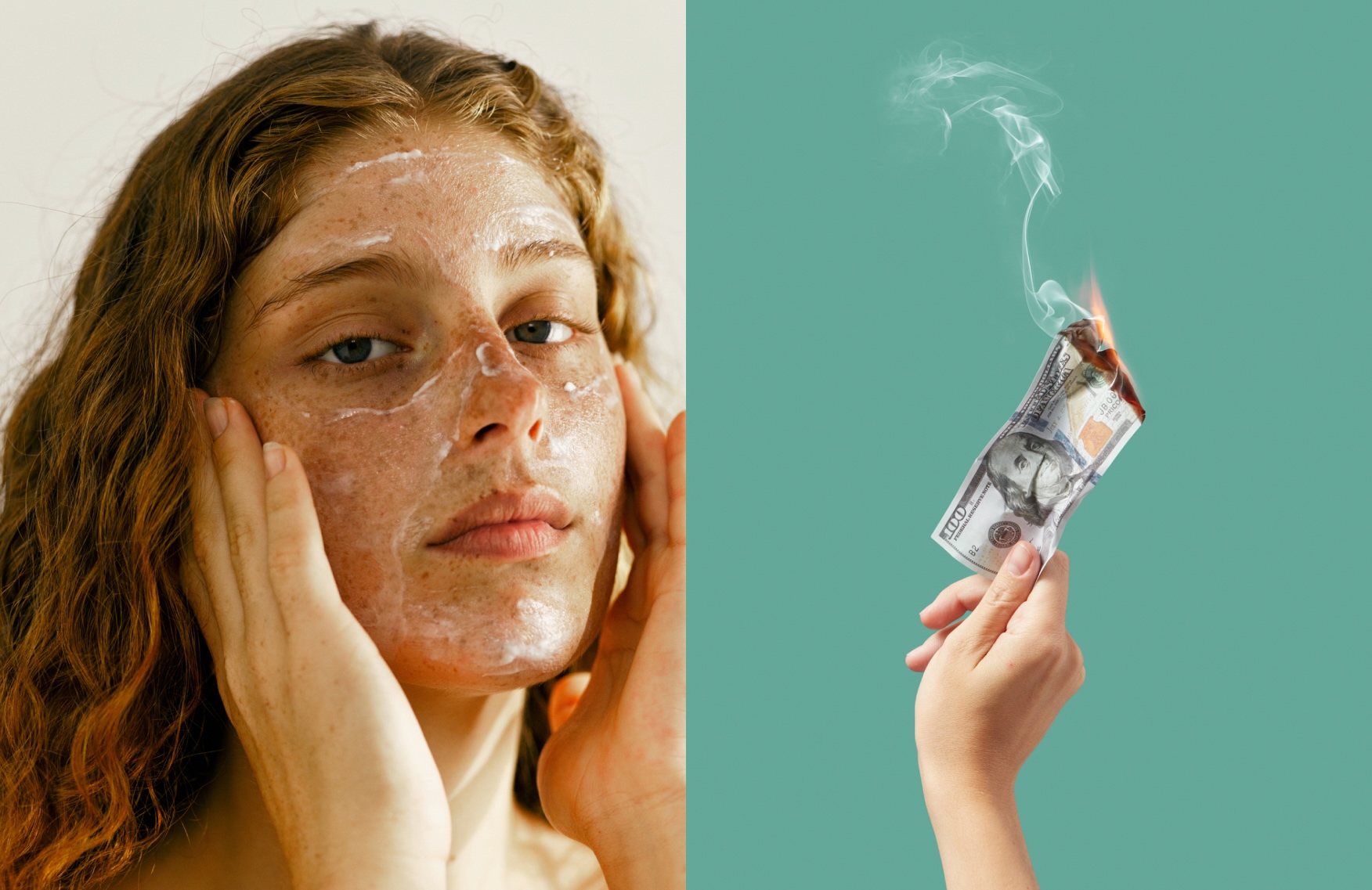Is your skin trying to tell you something? The science behind purging—and why it’s more beneficial than you might think

Forget what you’ve been told about skin purging. It might not be pretty, but it’s not necessarily your enemy either. To clear things up, we went to those in-the-know (a research chemist and an esthetician who’s been through it herself) for the facts. Heads-up: Purging can actually be a good thing. (*Faints.*) Read on as they answer all our questions, from what does skin purging look like to why does it happen.
What’s skin purging?
Before diving into what a skin purge looks like and what causes it, it’s important to know what the skin purging process really is.
“Skin purging is your skin’s reaction to being exfoliated,” says Erica Suppa, a research scientist formerly of GlaxoSmithKline, who is now a licensed esthetician and founder of Fresh Faced Skin Care. “When your top layer of dead skin cells dissolves away, it reveals your next layer in the epidermis, which reveals congestion that existed within your skin that you didn’t realize was there.”
Think of the skin purging process and the accompanying acne breakout as the dead skin cells and debris beneath the skin’s surface that’s coming out due to skin cell turnover.
What’s not skin purging?
“If you’ve tried a new moisturizer and quickly spotted a new pimple, it’s probably not purging,” says Cassandra Bankson, an esthetician, model and long-time acne sufferer who has garnered more than 2 million views on her YouTube real-talk video about acne.
“In fact, your skin has multiple layers and a pimple could be brewing under the skin long before you tried that new product,” Bankson says. “Ask yourself questions to determine the breakout culprit. “Are my hormones going crazy? Am I drinking more dairy? Or is this product speeding up my skin cell turnover and pushing already-existing debris to the surface?”
A hormonal acne breakout or irritated skin caused by a new product could be mistaken for purging, especially if you have acne-prone skin.
What causes purging?
Purging is a normal process when it comes to skin exfoliation. “Mostly chemical exfoliants, such as alpha hydroxy acids (AHAs) and retinoids that stimulate cellular turnover. To a lesser extent, physical exfoliants, such as facial scrubs can also stimulate purging,” Suppa advises.
What does skin purging look like?
It’s hard to tell a purge from breakouts because they can look the same, though closer examination might reveal some key purging indicators. Suppa says, “Purging will tend to appear more clustered and numerous, and often show up in areas of your face in which you’ve never experienced breakouts before.”
If you’re truly trying to decide if you’re breaking out or purging, speak with a dermatologist, because your skin’s response to any product depends on your own genetic predisposition to conditions like acne and inflammation.
Purging is bad, right?
Not exactly. Bankson says, “It comes with a bad connotation, but if you’re purging that means your skin cells are turning over faster. Waiting out that purging period means the product is working.”
Suppa notes that purging can help offset “chronic breakouts for long periods of time.” So a little surface purging now could be your big breakthrough to clearer skin. “I also recommend using sunscreen,” Suppa says. “This will help keep the leftover acne marks from staying on your skin longer.”
It’s important to remember that skin purging is a natural response. While there aren’t ways to completely prevent skin purging, there are some things we can do to minimize the effects of purging. Introducing one new skincare product at a time and giving it time to see results is important to minimize skin purging. Not packing on one acne treatment after another can also help prevent damaging your skin barrier.
What about how purging makes me look and feel?
“Purging is emotional and it hurts,” Bankson says. “But learn this fast: What you look like has no impact on how you can change this world. You’re not broken, and you don’t need to be fixed.” She also recommends empowering yourself with knowledge about ingredients and skin itself. “Start treating skincare as selfcare! Love all the things your skin does for you throughout the day. You don’t have to agree with what your skin is doing 100% of the time, but you can find ways to appreciate all the ways it protects you.”


